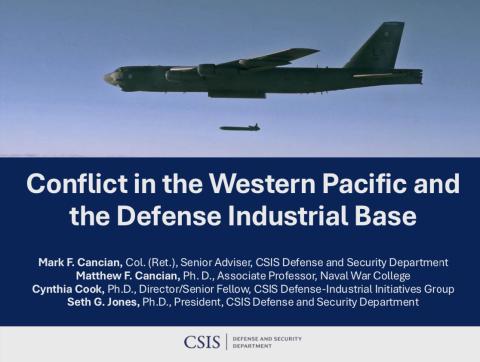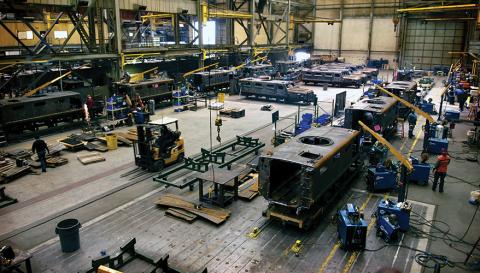Select Committee on the CCP Holds Defense Industrial Base Simulation

WASHINGTON, D.C.- On Wednesday, members of the House Select Committee on the Chinese Communist Party participated in a bipartisan, interactive simulation run by the Center for Strategic and International Studies (CSIS) on the state of the U.S. Defense Industrial Base.
CSIS's Defense and Security Department experts led the lawmakers through a simulation of a Taiwan conflict in the Indo-Pacific and discussed ways Congress, in a bipartisan manner, can revitalize and reconfigure America's defense industrial base to deter and be prepared for such an event.
Read highlights of the results from the simulation below, and see full findings HERE.
Photos & B-roll for public broadcast and distribution is available HERE
(Email sccpressteam@mail.house.gov for passcode to access media. All media is permissible to use in any format)

Chairman John Moolenaar on the results of the simulation:
"In our tabletop exercise today, we walked through one simulation of what might happen in a worst-case scenario conflict with China and learned ways we can work together in a bipartisan manner to ensure that America is prepared to be the Arsenal of Democracy once more if called upon. No matter where or when, the United States and our allies must have the military means to defeat our adversaries."

See the full findings from the simulation HERE
Simulation Results Highlights:
Summary: The simulation was set in 2026 using anticipated numbers of US and Chinese forces, and demonstrated that the US defense industrial base is woefully ill-equipped to support US military requirements in the event of a conflict with China. Among the troubling results included:
- Munitions: The US and Taiwan ran low on critical munitions in a matter of days. Among the critical munitions most impacted were LRASMs, Taiwan’s Anti-Ship Cruise Missiles, and JASSM-ER.
- Ships: The US faced crippling losses, including 2 aircraft carriers, 15 large surface combatants, 3 attack submarines, and 2 amphibious ships.
- Aircraft: US airpower also faced heavy losses, with between 250-455 4th and 5th generation fighter aircraft destroyed and up to 30 B-21 bombers lost.
At its current production capacity, the US defense industrial base would effectively not be able to replace these losses.
Though the Chinese military also sustained heavy losses, its superior defense industrial base, and in particular, its shipbuilding capacity (230 times greater than the US’) was far better positioned able to backfill losses.

U.S. Defense Industrial Base Challenges:
The simulation showcased a number of critical challenges for the U.S. defense industrial base:
- Supply Chain: Limited U.S. production of solid rocket motors, processor assemblies, castings, ball bearings, forgings, seekers for munitions, and microelectronics.
- Timelines: Roughly 2 years to produce key munitions, such as Tomahawk Block V, LRASM, JASSM, and others.
- Munitions Stockpiles: Insufficient stockpiles of critical munitions for protracted war, including in or near key theaters.
- Workforce: Insufficient supply of engineers, electricians, pipefitters, shipfitters, metalworkers, and others.
Contracting & Acquisitions: Little urgency in acquisitions and contracting, which are currently operating in a peacetime environment.